I have checked my PHP ini file (php.ini) and display_errors is set and also error reporting is E_ALL. I have restarted my Apache webserver.
I have even put these lines at the top of my script, and it doesn't even catch simple parse errors. For example, I declare variables with a "$" and I don't close statements";". But all my scripts show a blank page on these errors, but I want to actually see the errors in my browser output.
error_reporting(E_ALL);
ini_set('display_errors', 1);
What is left to do?
